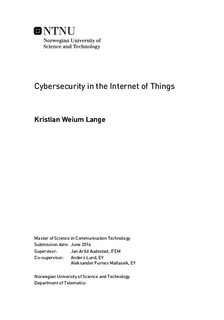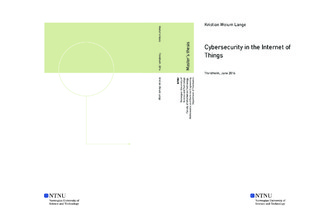| dc.description.abstract | Increasingly, the Internet of Things (IoT) is adapted by businesses to improve operations, processes, and products. This thesis presents a possible structure where IoT systems may utilize a common platform for connectivity, processing, and user interaction.
By the use of graph theory, this structure is analyzed to identify the robustness and vulnerability of the IoT systems, as their availability could be essential to preserve.
Furthermore, the thesis assesses and analyses the attack surface of generic IoT systems by studying the overall exposure the components in a system have to the surroundings.
It also evaluates the various technologies and services that may be used by the components from a security perspective.
The thesis introduces possible security mechanisms to give an understanding of how an IoT system can react to the identified attack surface.
In the study, it is found that structural dependencies between IoT systems could pose a significant threat as a single point of failure is introduced.
Multiple IoT systems can be attacked simultaneously when they share such a point. Additionally, the elements of the threat landscape that IoT systems face today have been identified. Also, significant threats have been described generally and through the use of possible attack vectors. | |

